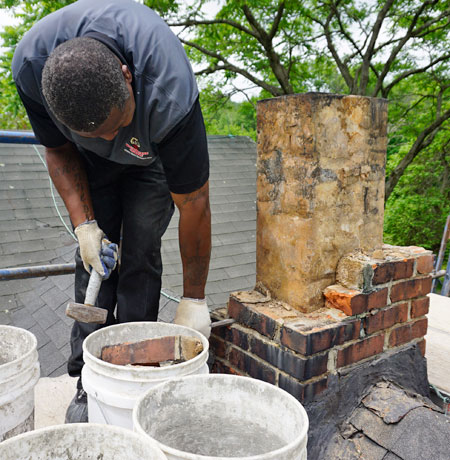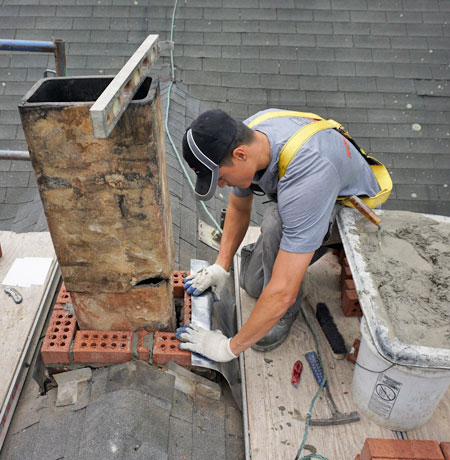Protecting Your Chimney From Brick Erosion
 A well-built chimney is strong and solid, and more than capable of handling extreme temperatures & keeping water out. But even the best chimneys are prone to deterioration over time. Once chimney damage is present, it will continue to worsen until you and your family are at risk for a serious safety hazard.
A well-built chimney is strong and solid, and more than capable of handling extreme temperatures & keeping water out. But even the best chimneys are prone to deterioration over time. Once chimney damage is present, it will continue to worsen until you and your family are at risk for a serious safety hazard.
Cracked masonry materials and areas where bricks are missing or crumbling all can be repaired. However, there are ways to protect your chimney from brick erosion so you can avoid costly rebuilding.
What kind of chimney damage can water do?
Water is the enemy of chimney structures, both inside and out. All types of materials used to build chimneys (with the exception of stone) will be negatively affected by long periods of contact with water and by the penetration of water. In addition to the normal erosion that comes from water or dampness, water can seep into cracks in the bricks and mortar and then expand during freezing temperatures, causing significant damage.
When water is allowed to get into the inside the chimney, a number of internal damages can result including:
- rusted damper components
- deteriorated firebox assemblies
- rusted trim on glass
- water stains on adjacent walls and the ceiling
- rotting of the home’s building materials around the chimney
- offensive odor coming from wet creosote inside the chimney liner
Solving the problems
The first step in assessing and preventing chimney damage is to have a professional inspection. Technicians who work in the chimney services industry understand the signs and symptoms of chimney damage much better than the average homeowner. If an inspection reveals areas that need repair, the work can be done to prevent further damage.
Preventative maintenance includes several elements. A chimney that has no or very minor cracks in the brick and mortar can be seal-coated to keep water from causing more damage down the line.
One of the best ways to keep water out of a chimney system is a simple device called a chimney cap, which sits atop the chimney and shields it against water as well as obstruction-causing debris. It’s never wise to leave the top of your chimney uncovered and exposed to the elements. Chimney caps should be made of a strong, corrosion-resistant material. They’re available in styles that cover one or two flue openings and cover all or most of the chimney top.
Another way water can infiltrate a chimney system is through a damaged chimney crown. The crown is the concrete slab that seals the top of the top of the chimney from the edge of the chimney to the flue liner. A damaged crown should be repaired, while preventative maintenance might include a protective sealant.
 The metal flashing that provides a seal between the chimney and the roof also needs regular inspection. Time and weather can cause flashing to warp, which gives rain and melting snow easy access to the interior of the home and the chimney structure within it.
The metal flashing that provides a seal between the chimney and the roof also needs regular inspection. Time and weather can cause flashing to warp, which gives rain and melting snow easy access to the interior of the home and the chimney structure within it.
As you can see, there are many areas in and around your chimney that can suffer damage and lead to expensive – and potentially dangerous – problems. The best way to prevent all this is to have your chimney serviced regularly by a professional.
Northeastern Chimney of West Hartford, CT, is ready to help with all inspection, cleaning, maintenance and repair work for your chimney and fireplace. If you have questions or wish to schedule an appointment, please call (860) 233-5770.


